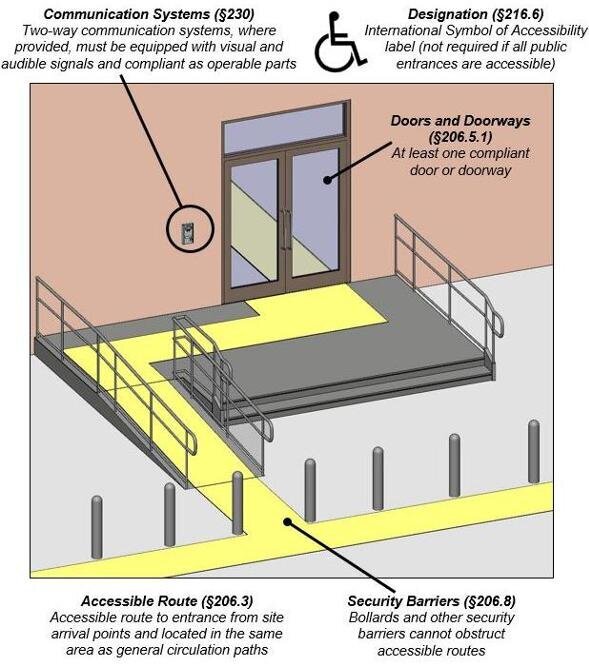Building Accessibility
Building accessibility has been a central focus of disability rights advocacy, and the historical context reveals a landscape marked by significant challenges prior to the enactment of the federal Americans with Disabilities Act (ADA) in 1990. Before the ADA, individuals with disabilities encountered substantial barriers when navigating public and private spaces. Buildings often lacked essential features like ramps, elevators, and accessible restrooms, rendering them practically inaccessible to those with mobility challenges. This exclusionary design extended to employment and educational institutions, limiting opportunities for individuals with disabilities to participate fully in societal activities. The legal and social consequences of these barriers underscored the pressing need for comprehensive legislation to rectify these injustices and promote universal access.
The federal ADA emerged as a groundbreaking solution to the pervasive issues surrounding building accessibility. The legislation mandated that public and private entities remove architectural barriers where feasible, paving the way for the installation of ramps, accessible entrances, and other modifications to ensure equal access. This legal framework aimed to eliminate discrimination against individuals with disabilities and promote their integration into mainstream society. The ADA Standards for Accessible Design provided specific guidelines for constructing and altering facilities, setting forth requirements that encompassed everything from door widths to the placement of grab bars in restrooms. By addressing the physical barriers within buildings, the ADA fundamentally reshaped the built environment, fostering a more inclusive society where individuals with disabilities could navigate public spaces, workplaces, and educational institutions with newfound independence.
The ADA not only sought to remedy existing architectural challenges but also aimed to curb discriminatory practices by fostering a proactive culture of accessibility. By establishing a legal foundation that required businesses and public entities to prioritize accessibility, the ADA aimed to prevent future instances of exclusion and discrimination. The legislation not only transformed physical spaces but also influenced the mindset of architects, builders, and businesses, encouraging them to embrace universal design principles. In doing so, the ADA envisioned a future where building accessibility was not merely a legal obligation but an integral part of a more equitable and inclusive society, breaking down barriers and promoting the full participation of individuals with disabilities in all facets of public life.


